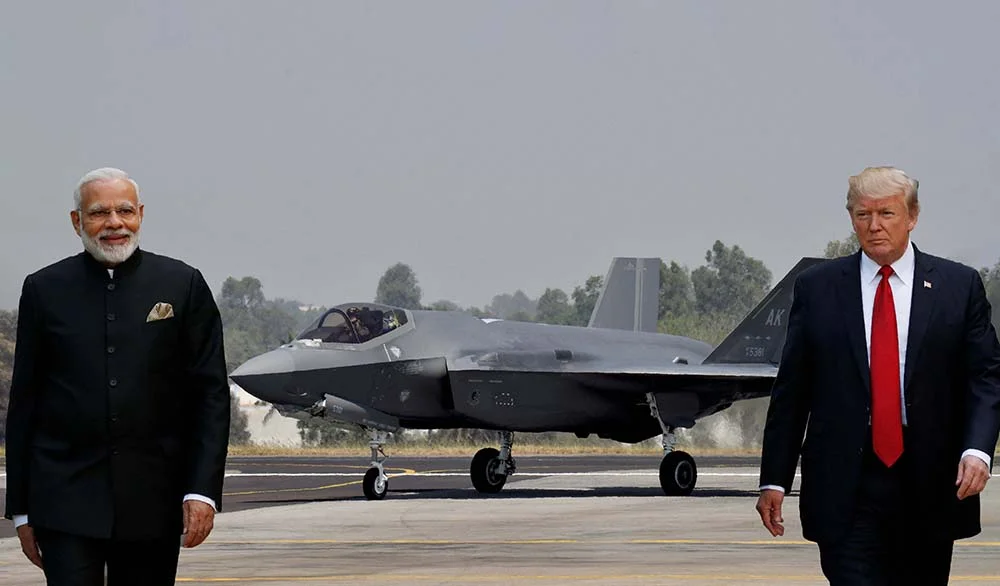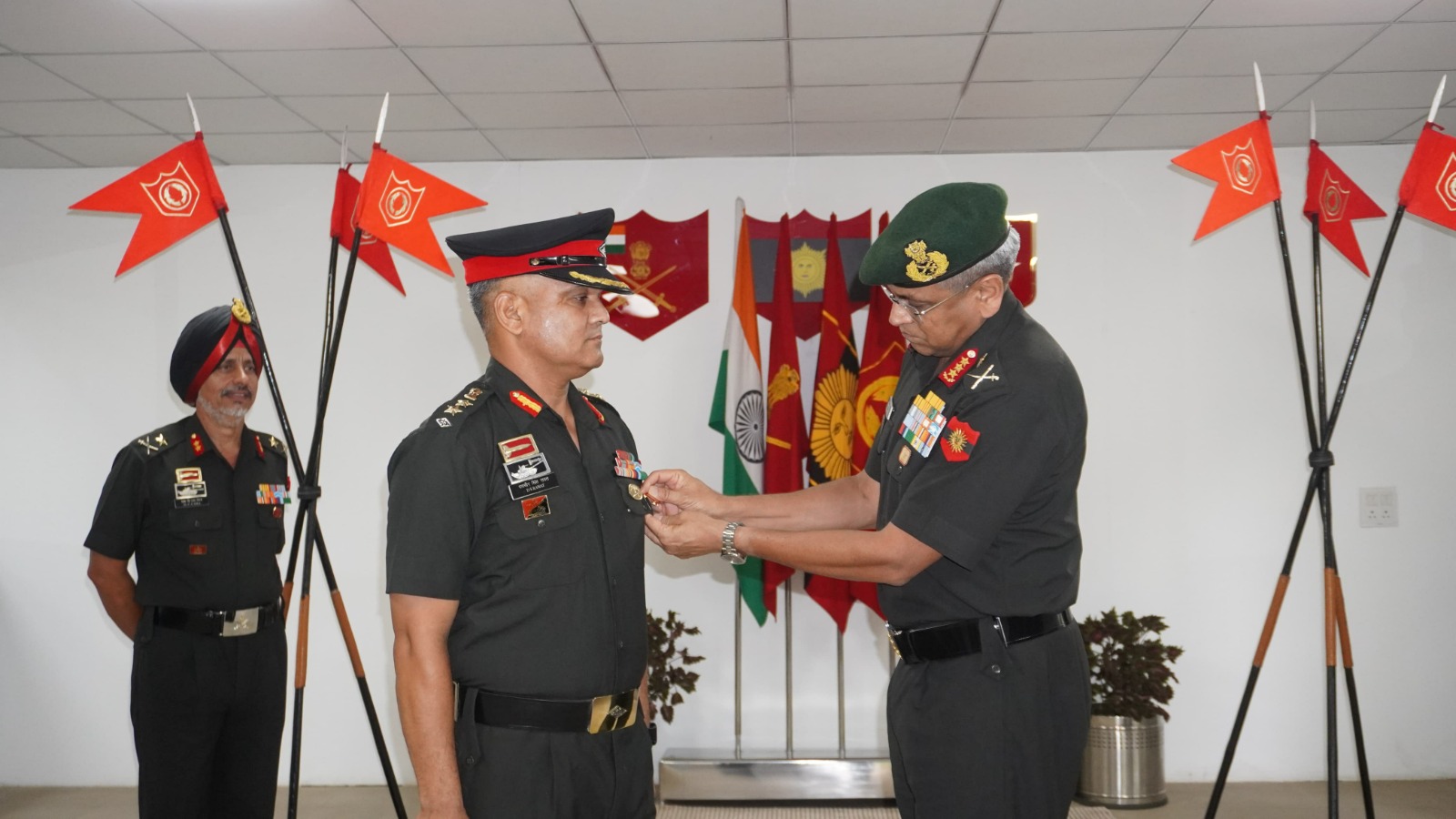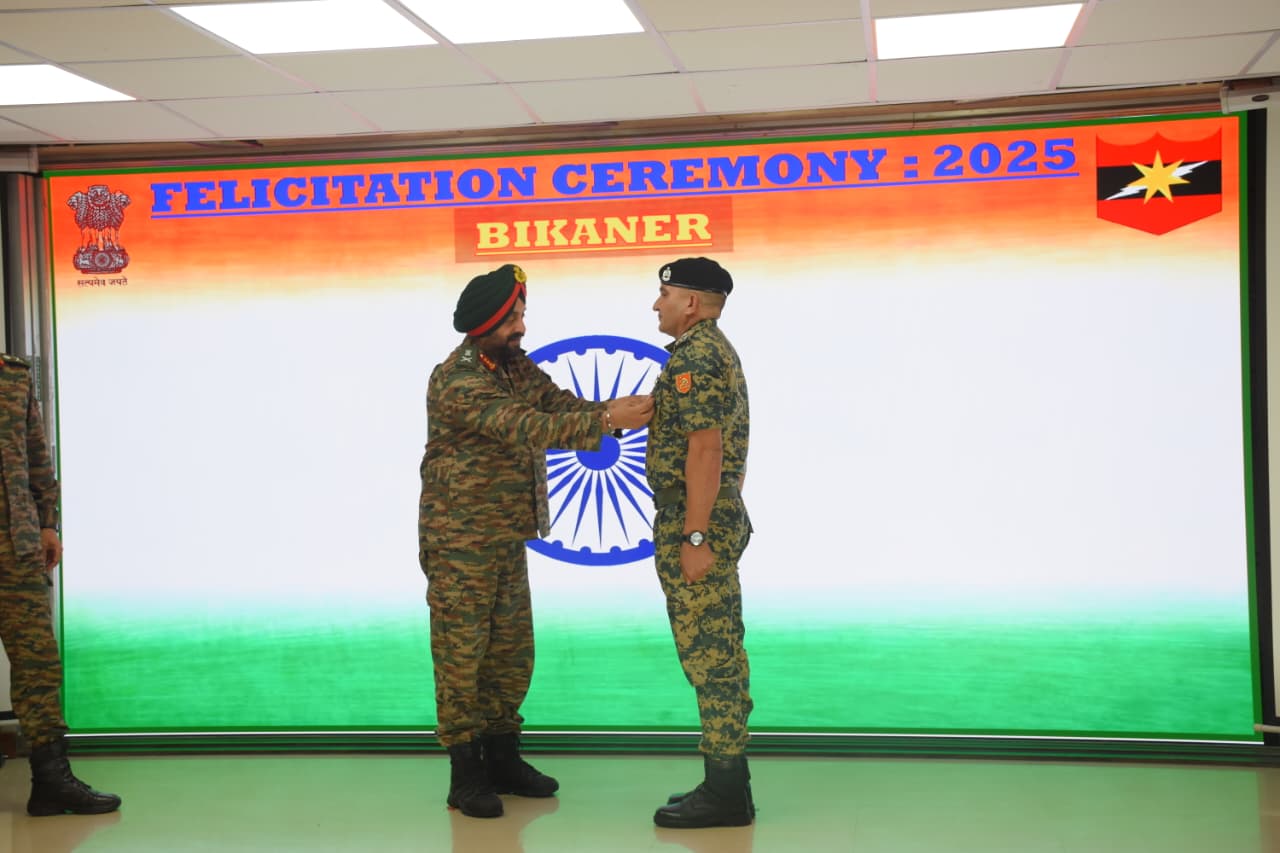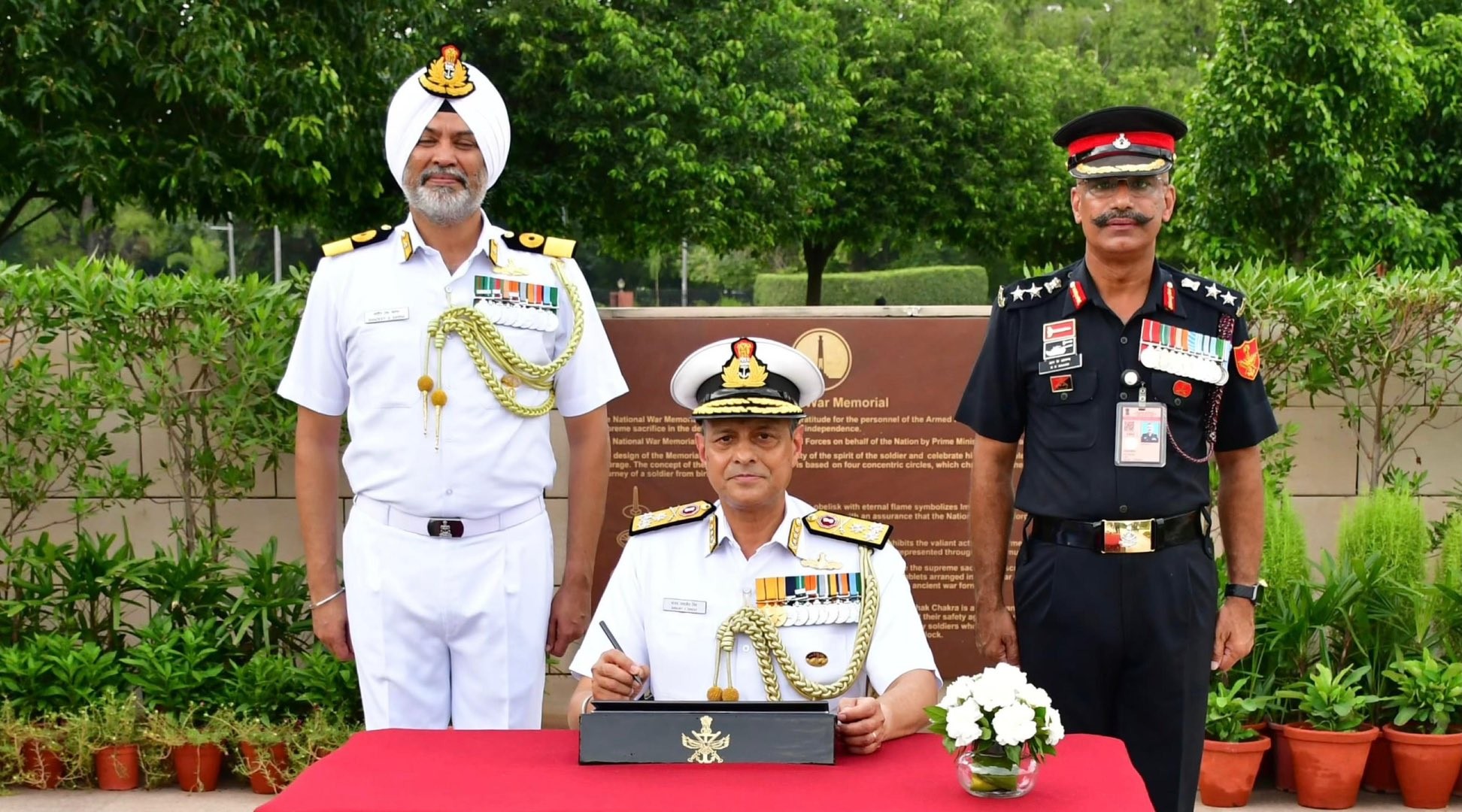India Reportedly Declines U.S. Offer to Buy F-35 Jets
India has informed the United States that it is not interested in purchasing the F-35 stealth fighter jets, even as…
Lt Gen Anindya Sengupta Visits Uttarakhand Sub Area to Boost Operational Readiness and Veteran Welfare
Lieutenant General Anindya Sengupta, General Officer Commanding-in-Chief of the Indian Army’s Central Command, conducted a high-level visit to the Headquarters…
Lt Gen Manjinder Singh Honors BSF Deputy Commandant Mahesh Chand Jaat with Commendation Card
In a notable gesture of inter-service recognition, Lieutenant General Manjinder Singh, General Officer Commanding-in-Chief of the Indian Army’s South Western…
Vice Admiral Sanjay Jasjit Singh Retires After 39 Years of Stellar Service to Indian Navy
Vice Admiral Sanjay Jasjit Singh officially retired today after completing 39 years of distinguished service in the Indian Navy. A…
Lt Gen V Sreehari Takes Over Command of Dakshin Bharat Area from Lt Gen Karanbir Singh Brar
In a significant leadership change in the Indian Army, Lieutenant General V Sreehari has taken over as the new General…
Vice Admiral K Swaminathan Takes Over as Western Naval Commander in Ceremonial Parade at INS Shikra
Vice Admiral Krishna Swaminathan, AVSM, VSM, formally assumed command as the Flag Officer Commanding-in-Chief (FOC-in-C) of the Western Naval Command…






